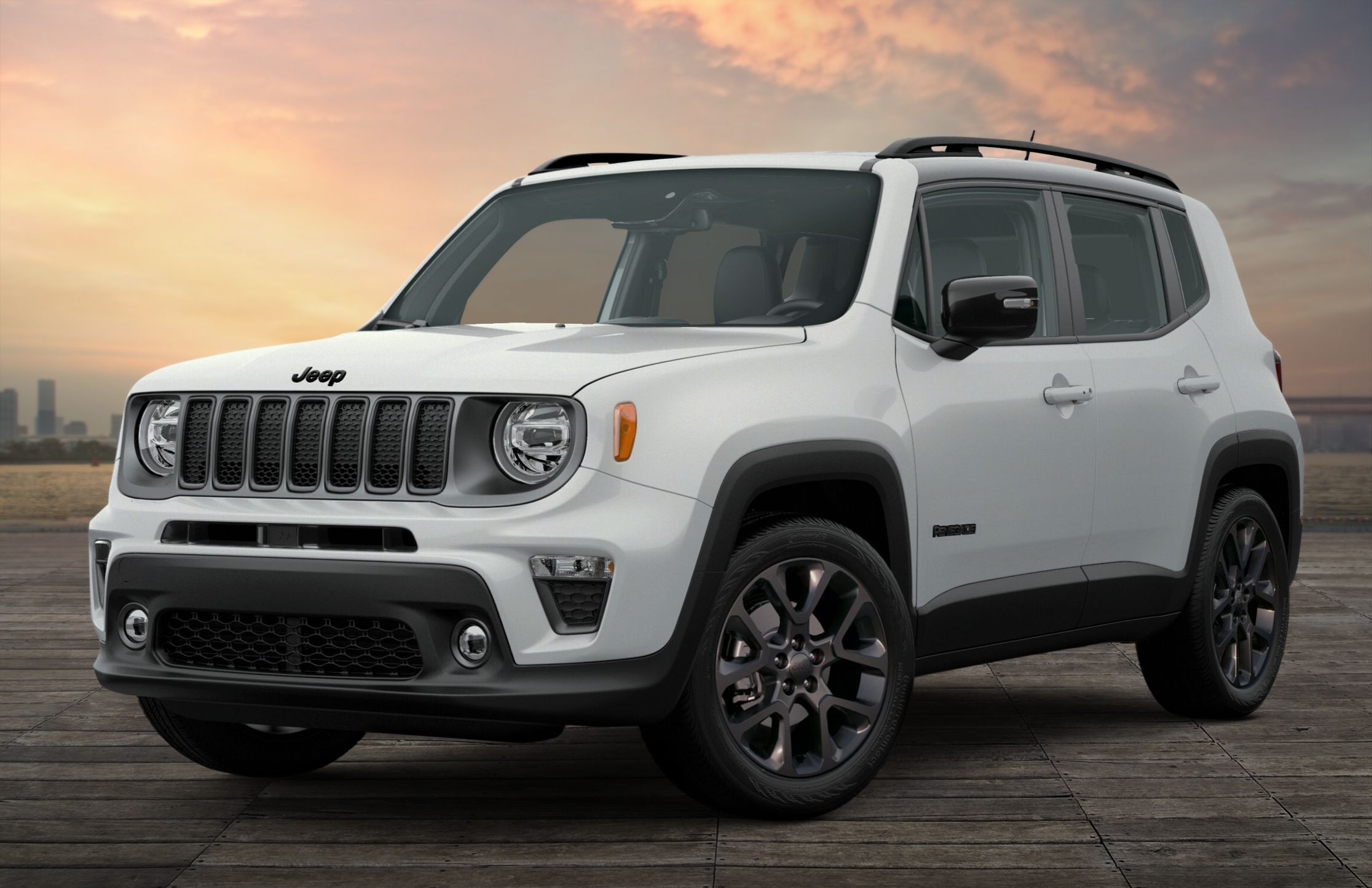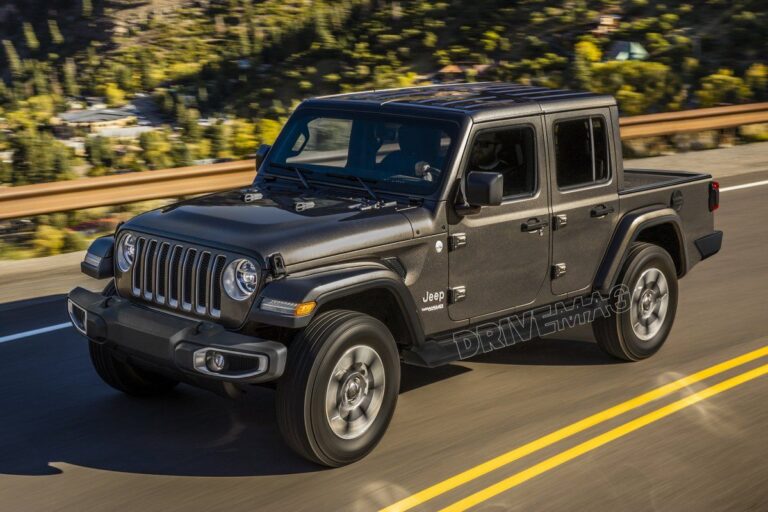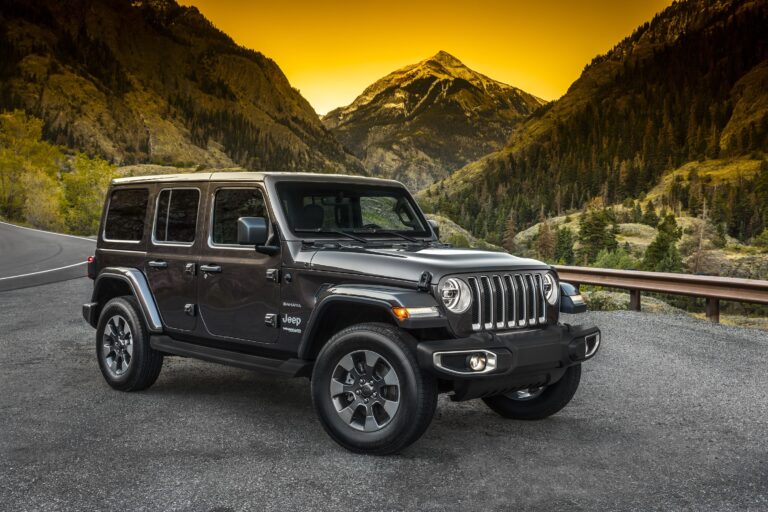Jeep Liberty Diesel Motor For Sale: A Comprehensive Guide to Acquiring and Maintaining the Legendary CRD Engine
Jeep Liberty Diesel Motor For Sale: A Comprehensive Guide to Acquiring and Maintaining the Legendary CRD Engine jeeps.truckstrend.com
The Jeep Liberty, particularly the KJ generation produced between 2002 and 2007, holds a unique place in the hearts of many Jeep enthusiasts. While most were equipped with gasoline engines, a select few, specifically the 2005 and 2006 models in North America, came with a rare and highly sought-after powerplant: the 2.8-liter Common Rail Diesel (CRD) engine. This robust VM Motori-sourced diesel transformed the Liberty into a torque-monster, offering impressive fuel economy and towing capabilities far beyond its gasoline counterparts. Today, finding a "Jeep Liberty Diesel Motor for Sale" often signifies an owner looking to restore a beloved vehicle, upgrade a gasoline model (a complex endeavor), or embark on a custom project. This article delves deep into everything you need to know about this legendary engine, from its advantages to the intricacies of purchasing and maintaining one.
Why Choose a Jeep Liberty Diesel Motor? Unpacking the CRD Advantage
Jeep Liberty Diesel Motor For Sale: A Comprehensive Guide to Acquiring and Maintaining the Legendary CRD Engine
The 2.8L CRD engine, designated as the VM Motori R 428 DOHC, brought a distinct set of benefits to the Jeep Liberty that set it apart:
- Unrivaled Torque and Towing: With a stout 295 lb-ft of torque (compared to the 3.7L V6’s 235 lb-ft), the diesel Liberty excelled at towing and low-speed crawling. This made it a favorite for those hauling trailers, boats, or needing serious off-road capability where grunt matters more than horsepower.
- Superior Fuel Economy: Diesel engines are inherently more efficient. The Liberty CRD consistently delivered mileage in the low to mid-20s MPG, a significant improvement over the gasoline models which often struggled to break 20 MPG. Over the long run, this translated to substantial savings at the pump.
- Durability and Longevity: Properly maintained diesel engines are renowned for their longevity. The 2.8L CRD, with its sturdy construction, often outlives its gasoline counterparts, making it a valuable asset for owners looking for a long-term solution.
- Rarity and Value: Only a limited number of diesel Libertys were sold in the US, making the engines themselves quite rare. This rarity, combined with their performance advantages, means that a well-maintained CRD motor holds significant value for those in need of a replacement or looking to embark on a unique build.
- Enhanced Off-Road Prowess: The low-end torque of the diesel engine is a game-changer for off-roading. It allows for precise control over challenging terrain, reducing the need for excessive throttle input and making climbs easier.

Understanding the 2.8L CRD Engine (VM Motori R 428 DOHC)
To make an informed purchase, it’s crucial to understand the engine’s core specifications and common characteristics:
- Engine Type: Inline 4-cylinder, DOHC (Dual Overhead Cam), 16-valve, Common Rail Direct Injection (CRD), Turbocharged.
- Displacement: 2.8 Liters (2776 cc).
- Horsepower: 160 hp @ 3800 rpm.
- Torque: 295 lb-ft @ 1800 rpm.
- Fuel System: Bosch Common Rail with high-pressure pump and electronically controlled injectors.
- Turbocharger: Variable Geometry Turbocharger (VGT) for optimal boost across the RPM range.
- Emissions: Equipped with an Exhaust Gas Recirculation (EGR) system. US models (2005-2006) typically did not have a Diesel Particulate Filter (DPF), simplifying some aspects of maintenance compared to newer diesels.
- Timing System: Belt-driven camshafts, requiring periodic replacement.


While generally robust, like any engine, the 2.8L CRD has its known quirks and maintenance points:
- Timing Belt Service: Critical and often overlooked. Failure can lead to catastrophic engine damage.
- EGR Valve Issues: Can become clogged with carbon, leading to performance issues and check engine lights.
- Fuel Injector Seals: Can leak, causing fuel dilution in the oil.
- Glow Plugs: Essential for cold starting, can fail over time.
- Turbocharger Health: Listen for excessive whine or smoke.
Where to Find a Jeep Liberty Diesel Motor For Sale
Acquiring a 2.8L CRD engine requires a focused search due to its limited availability. Here are the most common avenues:
- Online Marketplaces: Websites like eBay Motors, Craigslist, and Facebook Marketplace are popular starting points. Use specific search terms like "Jeep Liberty CRD engine," "2.8L VM Motori," or "KJ Diesel engine." Be cautious and vet sellers thoroughly.
- Specialized Forums and Enthusiast Groups: Websites like LostJeeps.com (a dedicated Liberty CRD forum) and various Facebook groups focused on the Jeep Liberty or diesel swaps are invaluable resources. Members often part out vehicles or know where engines are available.
- Salvage Yards and Auto Recyclers: These are excellent sources for used engines. Call local and regional yards, specifying the exact year (2005-2006) and the 2.8L diesel engine. They might have a crashed Liberty CRD from which they can pull the engine.
- Specialty Diesel Performance/Repair Shops: Some shops that specialize in diesel engines might have rebuilt or remanufactured units for sale, or they may know of sources. They often offer a warranty, which is a significant advantage.
- Private Sellers Parting Out Vehicles: Keep an eye out for complete Liberty CRDs being sold for parts. This can sometimes yield a complete engine, transmission, and associated components, making a swap easier.
What to Look For When Buying a Used Jeep Liberty Diesel Motor
Purchasing a used engine, especially a relatively rare one, comes with inherent risks. Diligence is key:
- Mileage and Service Records: Lower mileage is generally preferred, but a high-mileage engine with meticulous service records is often better than a low-mileage one with no history. Ask for proof of regular oil changes, timing belt replacements, and any major repairs.
- Visual Inspection:
- Leaks: Check for oil, coolant, or fuel leaks around seals, gaskets, and hoses.
- Cracks/Damage: Inspect the engine block, cylinder head, and exhaust manifold for any cracks or signs of impact.
- Corrosion: Moderate surface rust is normal, but excessive corrosion can indicate poor storage or neglect.
- Belts and Hoses: Check their condition. While they’ll likely be replaced during installation, their current state can hint at overall maintenance.
- Oil Fill Cap/Dipstick: Check for milky residue (indicating coolant in oil) or excessive sludge.
- Completeness: Confirm what’s included. Does it come with the turbocharger, fuel injectors, high-pressure pump, wiring harness, ECU (Engine Control Unit), and accessories (alternator, AC compressor, power steering pump)? A more complete engine simplifies the swap.
- Seller Reputation and Warranty: If buying from a business, check their reviews. A reputable seller (especially one offering remanufactured engines) will often provide a limited warranty, which offers crucial peace of mind. Private sales rarely come with warranties.
- Pre-Purchase Inspection (If Possible): If the engine is still in the vehicle, a compression test can provide insights into cylinder health. If it’s on a stand, ask for videos of it running (if recently pulled) or detailed photos.
Installation Considerations and Challenges
Swapping a Jeep Liberty diesel motor is not a simple weekend project, especially if you’re converting a gasoline model.
- Professional vs. DIY: For most, professional installation by a shop experienced with diesel engines or Jeep swaps is recommended. It requires specialized tools, knowledge of complex wiring, and fluid systems. DIY is possible for experienced mechanics with proper equipment.
- Associated Parts and Components:
- Transmission: The CRD came with a specific transmission (545RFE automatic). If converting a gas model, you’ll likely need the diesel-specific transmission, transfer case, and potentially drive shafts.
- ECU/PCM: The engine’s computer must be compatible with the vehicle. Sometimes it needs to be "married" to the vehicle’s immobilizer system.
- Wiring Harness: The diesel wiring harness is distinct from the gasoline version.
- Fuel System: Diesel fuel lines, tank sender, and sometimes the fuel tank itself are different.
- Cooling System: Diesel radiators, intercoolers, and fan shrouds are specific.
- Exhaust System: The diesel exhaust is different.
- Mounts: Engine and transmission mounts are specific to the diesel.
- Emissions Compliance: If converting, check local and state regulations regarding engine swaps and emissions testing. This can be a significant hurdle.
- Post-Installation: Thoroughly check all connections, bleed the fuel system, fill all fluids, and conduct a careful initial startup and test drive, monitoring for leaks or abnormal noises.
Tips for Maintaining Your Newly Installed Diesel Engine
Once your 2.8L CRD is purring, proper maintenance is crucial for its longevity:
- Use the Correct Oil: Diesel engines require specific API CJ-4 or CI-4 rated diesel engine oil. Do not use gasoline engine oil. Adhere to the manufacturer’s recommended oil change intervals, often shorter than gasoline engines under heavy use.
- Fuel Filter is Critical: The common rail system is highly sensitive to fuel contamination. Replace the fuel filter religiously according to the service schedule (or more frequently if fuel quality is questionable).
- Air Filter: A clean air filter is vital for turbocharger health and engine performance.
- Coolant System: Use the correct type of coolant (HOAT or OAT as specified) and ensure regular flushes to prevent corrosion and maintain cooling efficiency.
- Timing Belt Replacement: This is non-negotiable. Adhere strictly to the manufacturer’s recommended interval (typically around 60,000-70,000 miles or 5 years) to prevent catastrophic engine failure.
- EGR System Maintenance: Consider periodic cleaning of the EGR valve and intake manifold to prevent carbon buildup, which can restrict airflow and cause performance issues.
- Listen and Observe: Pay attention to unusual noises, excessive smoke, or changes in performance. Early detection of problems can save significant repair costs.
- Quality Fuel: Use high-quality diesel fuel from reputable stations. If in cold climates, ensure you use winterized diesel or add anti-gel additives.
Jeep Liberty Diesel Motor For Sale: Estimated Price Table
Prices for a Jeep Liberty 2.8L CRD motor can vary significantly based on condition, mileage, completeness, and the seller. This table provides estimated ranges.
| Condition/Type | Estimated Price Range (USD) | Key Inclusions (Typical) | Warranty (Typical) | Notes |
|---|---|---|---|---|
| Used (High Mileage) | $1,500 – $3,000 | Long block (engine without accessories) | None / "As-Is" | Higher risk; best for parts or experienced rebuilders. May require significant work. |
| Used (Lower Mileage) | $3,000 – $5,000 | Long block, sometimes with turbo/injectors | None / Short-term (30-90 days) | Good potential, but still requires thorough inspection. Service history is paramount. |
| Used (Complete Pull-Out) | $4,000 – $7,000 | Engine, turbo, injectors, wiring, sometimes ECU, accessories | None / Short-term (30-90 days) | Best for direct replacement, reduces complexity of sourcing individual parts. |
| Rebuilt | $5,000 – $8,000+ | Engine with major components (bearings, rings, gaskets) replaced/machined | 6 months – 1 year | Good balance of cost and reliability. Done by a reputable shop. |
| Remanufactured | $7,000 – $10,000+ | Engine completely disassembled, inspected, all worn parts replaced | 1 year – 3 years | Highest quality, closest to new. Often includes updated components. Most reliable option. |
Note: Prices are estimates and can fluctuate based on market demand, seller, and specific included components. Shipping costs are typically extra and can be substantial for an engine.
Frequently Asked Questions (FAQ)
Q1: How much does a Jeep Liberty diesel motor cost?
A1: As detailed in the price table above, costs can range from $1,500 for a high-mileage used engine to over $10,000 for a fully remanufactured unit, depending on its condition, completeness, and warranty.
Q2: Is it difficult to swap a diesel engine into a gasoline Liberty?
A2: Yes, it’s a very complex and extensive undertaking. It’s not a direct bolt-in swap and requires not just the engine, but also the diesel-specific transmission, wiring harness, ECU, fuel system components, cooling system, and exhaust. It’s usually only recommended for highly experienced mechanics or professional shops.
Q3: What are the most common problems with the 2.8L CRD engine?
A3: The most common issues include timing belt failures (due to neglected maintenance), clogged EGR valves, leaking fuel injector seals, and occasional turbocharger issues. Most are preventable with proper and timely maintenance.
Q4: Are parts readily available for the 2.8L CRD?
A4: Many common maintenance parts (filters, belts, gaskets) are readily available through Mopar or aftermarket suppliers. However, some specialized components, particularly engine internal parts or specific sensors, can be harder to source and may require ordering from international suppliers.
Q5: What is the typical lifespan of a well-maintained 2.8L CRD?
A5: With proper maintenance, these engines are capable of easily reaching 200,000 to 300,000 miles or more. Regular oil changes with the correct diesel oil, timely timing belt replacements, and addressing issues promptly are key to longevity.
Q6: Do these engines require special fuel?
A6: Yes, they require ultra-low sulfur diesel (ULSD) fuel, typically designated as Diesel #2. In colder climates, winterized diesel or anti-gel additives are necessary to prevent fuel gelling. Never use gasoline in a diesel engine.
Conclusion
The Jeep Liberty Diesel Motor, the 2.8L CRD, remains a prized commodity for its unique blend of power, efficiency, and durability. Whether you’re a current owner seeking a replacement, a dedicated enthusiast planning a ambitious conversion, or simply curious about this rare beast, understanding its characteristics, sourcing options, and maintenance needs is paramount. While acquiring and installing one can be a significant investment and challenge, the reward of experiencing the legendary torque and fuel economy of the diesel Liberty often makes it a worthwhile endeavor. With careful research, a discerning eye, and a commitment to proper maintenance, you can ensure that these remarkable engines continue to power adventures for years to come.





